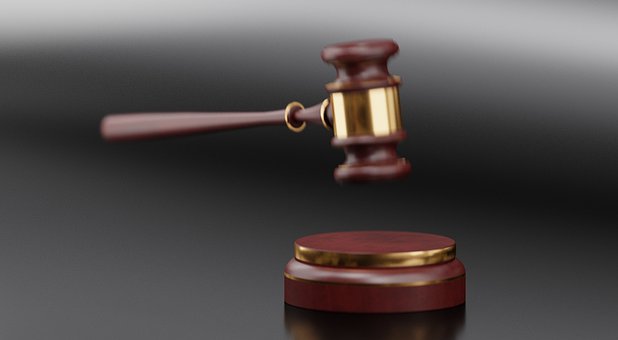Law has always been an integral part of human society, providing a framework for regulating human behavior, resolving conflicts, and enforcing justice. Over the centuries, law has evolved and developed, shaping and being shaped by the political, economic, and social landscapes of different times and places. Understanding the history of law can help us appreciate the challenges and opportunities that lie ahead, as we strive to create a more just and equitable world.
In this article, we will take a brief journey through the history of law, from its ancient origins to the modern legal systems of today. We will explore the major developments, events, and ideas that have shaped the evolution of law and its role in human societies.
Table of contents
- Origins of Law in Ancient Civilizations
- The Code of Hammurabi and the Emergence of Written Law
- The Roman Law: The Foundation of Modern Legal Systems
- Common Law and the Development of English Legal System
- The Rise of Constitutional Law and the Concept of Rule of Law
- The Enlightenment and the Birth of Modern Legal Philosophy
- The French Revolution and the Transformation of Law
- The 20th Century and the Expansion of Human Rights
- The Digital Age and the Challenges of Cyber Law
- Conclusion
- Bibliography
Origins of Law in Ancient Civilizations
The history of law dates back to ancient times, when human societies began to organize themselves into tribes and communities. Early legal systems were based on customary practices and traditions, and often reflected the religious and moral beliefs of the community. The ancient civilizations of Mesopotamia, Egypt, and China developed some of the earliest legal codes, which served as models for later legal systems.
The Code of Hammurabi and the Emergence of Written Law
One of the most famous legal codes from ancient times is the Code of Hammurabi, which was promulgated by the Babylonian king Hammurabi in the 18th century BCE. This code was one of the first written legal systems and consisted of 282 laws that regulated everything from property rights to criminal behavior. Hammurabi’s code was significant because it established the principle of “lex talionis,” or “an eye for an eye,” which has been influential in many legal systems throughout history.
The Roman Law: The Foundation of Modern Legal Systems
Another major influence on the development of law was the Roman legal system, which emerged in the early days of the Roman Republic and continued to evolve throughout the Roman Empire. Roman law was based on the principle of “jus civile,” or civil law, which was applied to Roman citizens, and “jus gentium,” or the law of nations, which was applied to non-citizens. Roman law was influential in the development of many modern legal systems, including civil law systems in Europe and Latin America.
Common Law and the Development of English Legal System
In England, the legal system developed in a different way, with the emergence of the common law system. This system was based on judicial decisions and precedent, rather than written laws, and evolved over time through the rulings of judges and the decisions of courts. The common law system was instrumental in the development of the English legal system and served as a model for many other legal systems around the world.
The Rise of Constitutional Law and the Concept of Rule of Law
One of the most significant developments in the history of law was the emergence of constitutional law, which is based on the idea that the power of the government is limited by a constitution that defines the rights and freedoms of citizens. The concept of the rule of law, which holds that all individuals and institutions are subject to the law, regardless of their position or power, is a fundamental principle of constitutional law.
The Enlightenment and the Birth of Modern Legal Philosophy
The Enlightenment was a period of intellectual and cultural development that took place in Europe in the 18th century. This era saw the birth of modern legal philosophy, as thinkers such as John Locke, Jean-Jacques Rousseau, and Immanuel Kant developed new ideas about the nature of law, justice, and human rights. The Enlightenment laid the foundations for many of the legal and political systems that exist in the modern world.
The French Revolution and the Transformation of Law
The French Revolution, which began in 1789, marked a turning point in the history of law, as it brought about significant changes in the legal and political systems of France and Europe. The Revolution was based on the principles of liberty, equality, and fraternity, and these ideals had a profound impact on the development of law. The French Revolution also marked the emergence of modern civil law, which was based on the Napoleonic Code, a legal system that had a profound influence on many legal systems around the world.
The 20th Century and the Expansion of Human Rights
The 20th century saw significant changes in the legal landscape, with the expansion of human rights and the development of international law. The Universal Declaration of Human Rights, adopted by the United Nations in 1948, laid the foundation for the protection of human rights around the world. The creation of international courts, such as the International Court of Justice and the International Criminal Court, has helped to ensure that individuals and governments are held accountable for their actions.
The Digital Age and the Challenges of Cyber Law
The 21st century has brought about new challenges for the legal system, as technology and the internet have created new forms of crime and new questions about privacy, intellectual property, and freedom of speech. Cyber law, the legal system that regulates the use of the internet and digital technologies, is a relatively new area of law that is rapidly evolving to keep pace with technological developments.
Conclusion
The history of law is a long and complex one, filled with important events and influential ideas. From the earliest legal codes of ancient civilizations to the modern legal systems of today, law has played a vital role in regulating human behavior, resolving conflicts, and promoting justice. As we move forward into the future, the challenges and opportunities facing the legal system will continue to evolve, and it is up to all of us to ensure that the law continues to serve the needs of society.
Bibliography
- Baker, J. H. (2002). An introduction to English legal history. Oxford University Press.
- Carruthers, B. G. (2011). The origins of law and economics: essays by the founding fathers. Edward Elgar Publishing.
- Glendon, M. A. (2001). A world made new: Eleanor Roosevelt and the Universal Declaration of Human Rights. Random House.
- Herman, E. S., & Chomsky, N. (2011). Manufacturing consent: The political economy of the mass media. Vintage.
- Kronman, A. T. (1983). History of the common law: the development of Anglo-American legal institutions. Greenwood Press.
- Merryman, J. H. (1985). The civil law tradition: An introduction to the legal systems of Europe and Latin America. Stanford University Press.
- Rose, C. M. (1999). Property and persuasion: essays on the history, theory, and rhetoric of ownership. Westview Press.
- Shaw, M. N. (2011). International law. Cambridge University Press.



 For all latest articles, follow on Google News
For all latest articles, follow on Google News